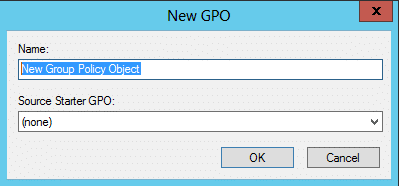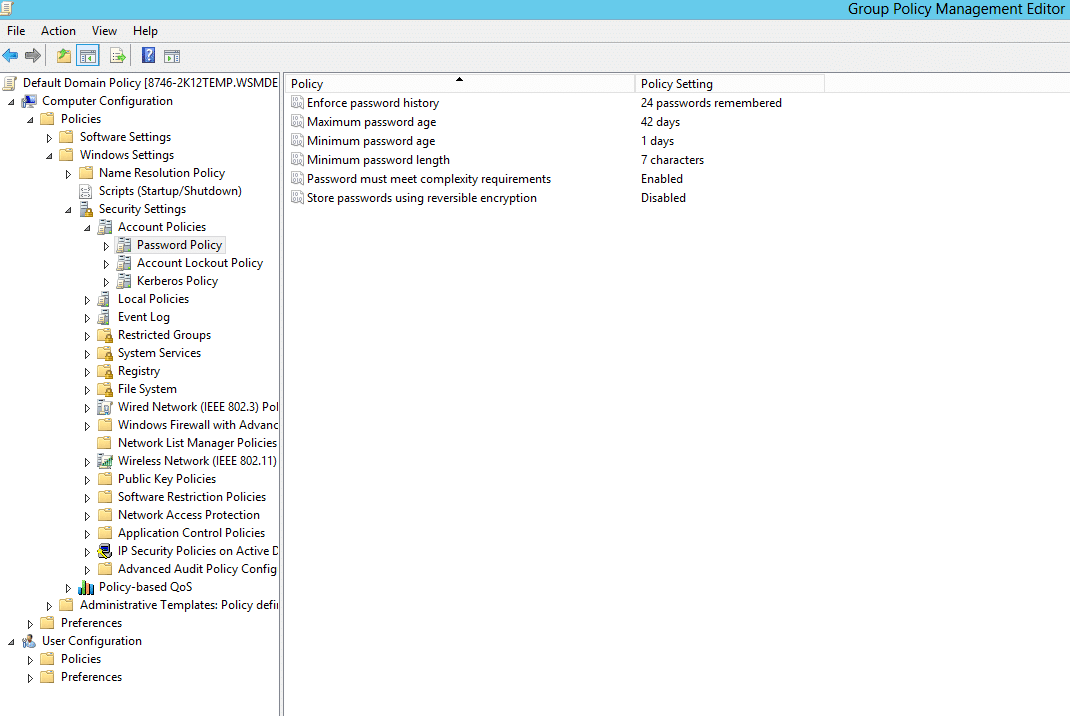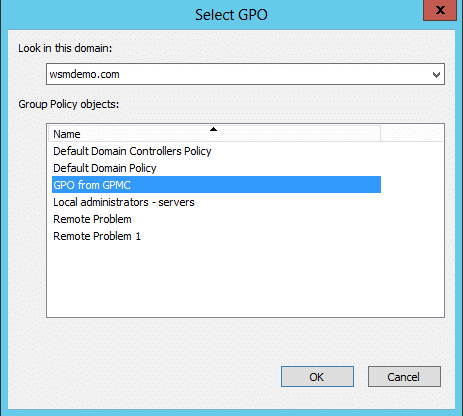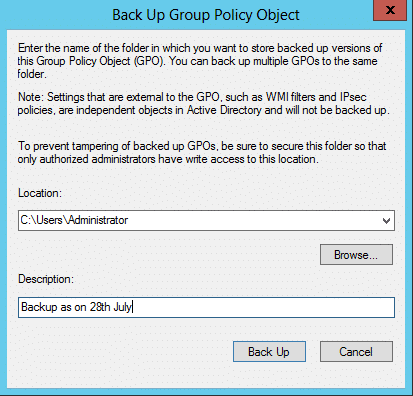How To Set Group Policy In Active Directory
What yous will acquire:
Managing an Active Directory (AD) network can become a little cumbersome once the number of resources in the network becomes larger. There is a myriad of things that need to be controlled such every bit security permissions, software installation, desktop settings for users and computers, administrator privileges, and many more. This is where Group Policies and Grouping Policy objects come up into play. In this article, we volition expect at what Advertising Group Policy objects (GPO) are, what are its types are, and how you can implement the group policies using GPOs.
What is Agile Directory Group Policy?
AD Group Policies are critical pieces of instructions in an Ad environment that an Information technology administrator tin configure. AD group policies will decide the behavior and privileges for users and computers. Grouping Policies are primarily a security solution for the AD network. Administrators can configure these settings and then implement sets of these settings on sites, domains, or OUs containing users and computers.
What is a Group Policy Object?
Multiple group policy settings are bundled together in a prepare called a Group Policy object (GPO). Once an administrator configures the Group Policies in the GPO as necessary, he/she tin then link the GPO to the container objects. The objects within the containers in question will then act within the boundaries and rules set past the policies in the GPO it was assigned. GPOs can be created and managed using the Grouping Policy Direction Console (GPMC).
A GPO stores its configuration data in ii locations:
1. Group Policy Container (GPC)
2. Grouping Policy Template (GPT)
A GPC is an object which contains information similar GPO'due south name, ACL, version information, and enable/disable status. It is stored in the CN=Policies, CN=System container of the domain. A GPT is stored as files on the SYSVOL directory on every domain controller in the domain. It contains the administrative templates and scripts related to the GPO. The contents of the SYSVOL folder are replicated betwixt all the domain controllers in the domain.
Managing GPOs in Active Directory
Now that we have understood what are Group Policies and GPOs, let's come across how we tin can create a GPO, and so view, edit, and dorsum upwards a GPO.
How to create a GPO in Agile Directory?
GPOs tin can exist created and managed using the Group Policy Management Console (GPMC). The configuration settings tin be edited using the Grouping Policy Object Editor (gpedit) console. The following steps illustrate how to create a GPO:
- Open the GPMC snap-in. To practice that, become to Commencement Card → Administrative Tools → Group Policy Management Console.
- In the left pane, expand the Forest container and so the domain container.
- Select the domain for which the policy settings take to created and applied.
- Double-click on the domain to see a list of OUs and other containers in the domain.
- Correct-click on the Group Policy Objects container and select New.
- Enter the proper name of the GPO and click OK.

How to edit a GPO in Active Directory?
The post-obit steps illustrate how to view the various settings configured under a GPO:
- Open the GPMC snap-in. To do that, go to Beginning Menu → Administrative Tools → Group Policy Management Panel.
- Right-click on the Grouping Policy Objects container and select a GPO.
- In the right pane, select the Settings Tab and click Testify all.
- If the policy settings are not divers for a GPO, both Computer configuration and User configuration sections will show "No settings defined".
- To configure policy settings for the GPO, right-click anywhere on the right pane or on the GPO and select Edit.
- The Group Policy Object Editor volition open. Scan through the Estimator configuration and User configuration settings and define them as necessary.

How to link a GPO to an object in Active Directory?
Creating a GPO and defining settings for that GPO will not apply them to the target users and computers. To apply the configuration policy settings in a GPO, it has to be linked to a site or a domain, or an OU. The post-obit steps illustrate how to link a GPO:
- Open the GPMC snap-in. To do that, go to Starting time Carte du jour → Administrative Tools → Group Policy Management Console.
- In the left pane, expand the Forest container and and then the domain container. Browse to the target domain.
- Right-click on the domain or site or an OU and select Link an existing GPO.
- In the Select GPO dialog box, under Group Policy Objects, select the GPO and click OK.
Now all the policy settings configured for that GPO will exist applied to all users and computers present in the site, domain, or OU to which the GPO is linked.

How to backup and restore GPOs in Active Directory?
Backing upward and restoring GPOs in Active Directory can exist done using the GPMC. Here are the steps you need to follow:
- Go to Start, and navigate to Authoritative tools. Then, navigate to Grouping Policy Management and click on information technology.
- In the GPMC window that opens, aggrandize the Group Policy Objects binder that contains the GPO which you desire to be backed upwards.
- Right-click the GPO, so click Support.
- This will open the Backup Grouping Policy Object window. Specify the path to the folder where you want the backed-up version of the GPO to reside.
- Once washed, click Dorsum Upwards.

In one case the GPO backup operation is done the window will intimate you of successful completion of the GPO fill-in, click OK. You'll now accept backed upwards all the GPOs. Yous tin can verify if the GPOs have been backed up, by navigating to the folder y'all specified during the backup process. You should come across a list of folders that would contain the GPO backup data. With this data, you lot can either restore a deleted GPO, or a modified GPO as necessary. To learn more most GPO backup, you tin read this commodity.
People as well read
Managing GPOs with Group Policy Management Console
Grouping Policy Direction Console (GPMC) – Part Two
Group Policy
How To Set Group Policy In Active Directory,
Source: https://www.windows-active-directory.com/create-enable-disable-gpo.html
Posted by: arnoldgrack1969.blogspot.com


0 Response to "How To Set Group Policy In Active Directory"
Post a Comment